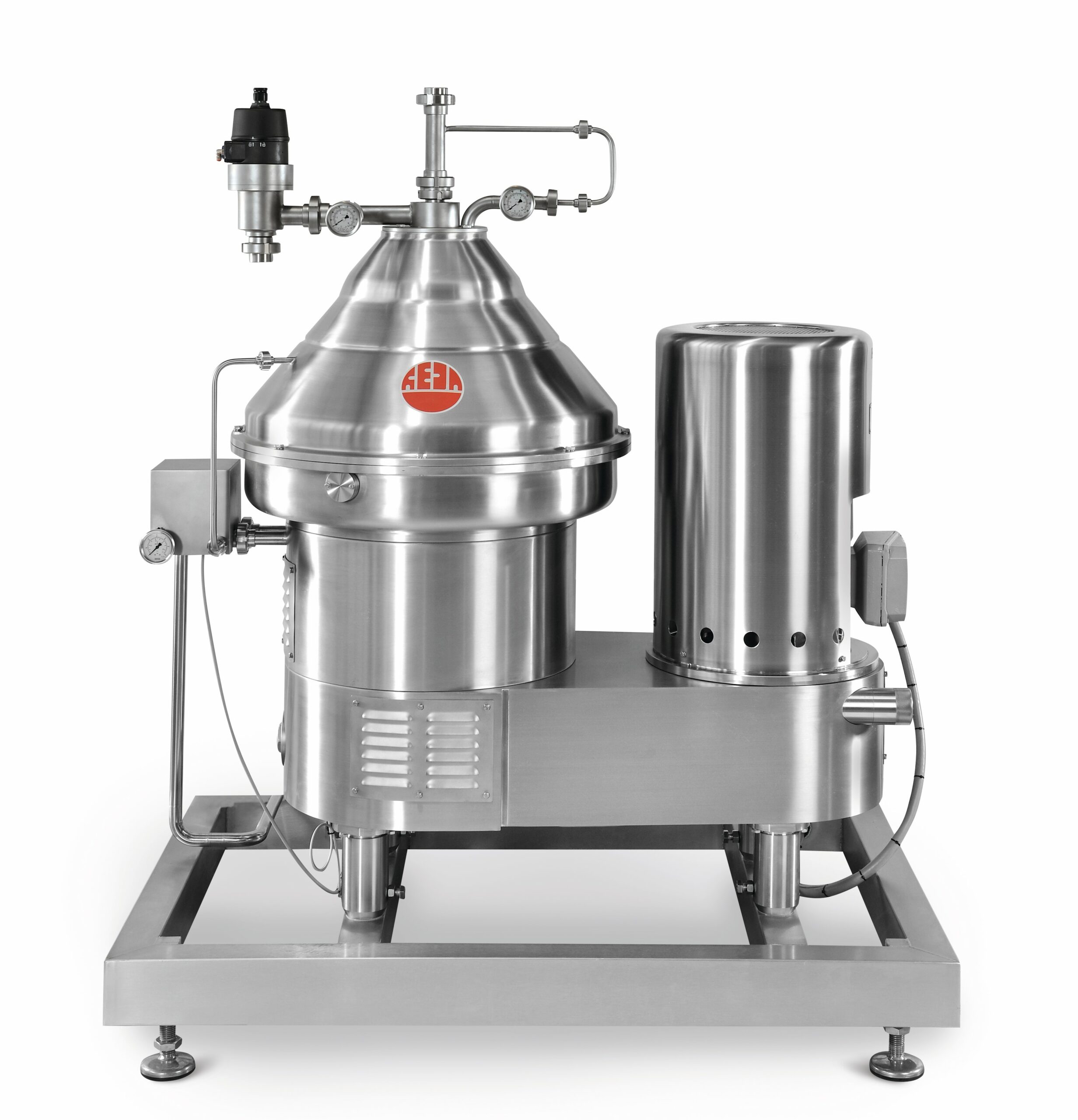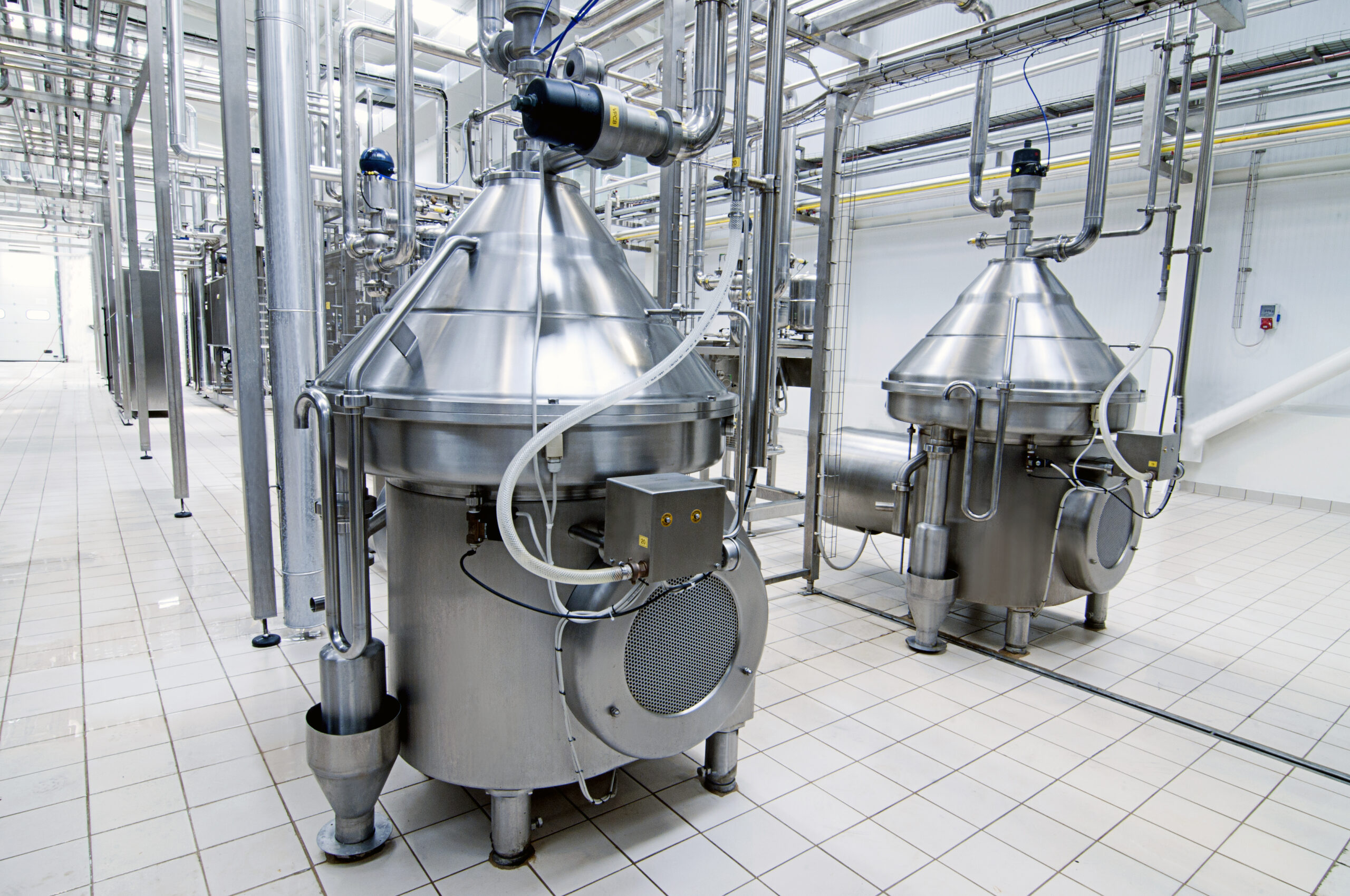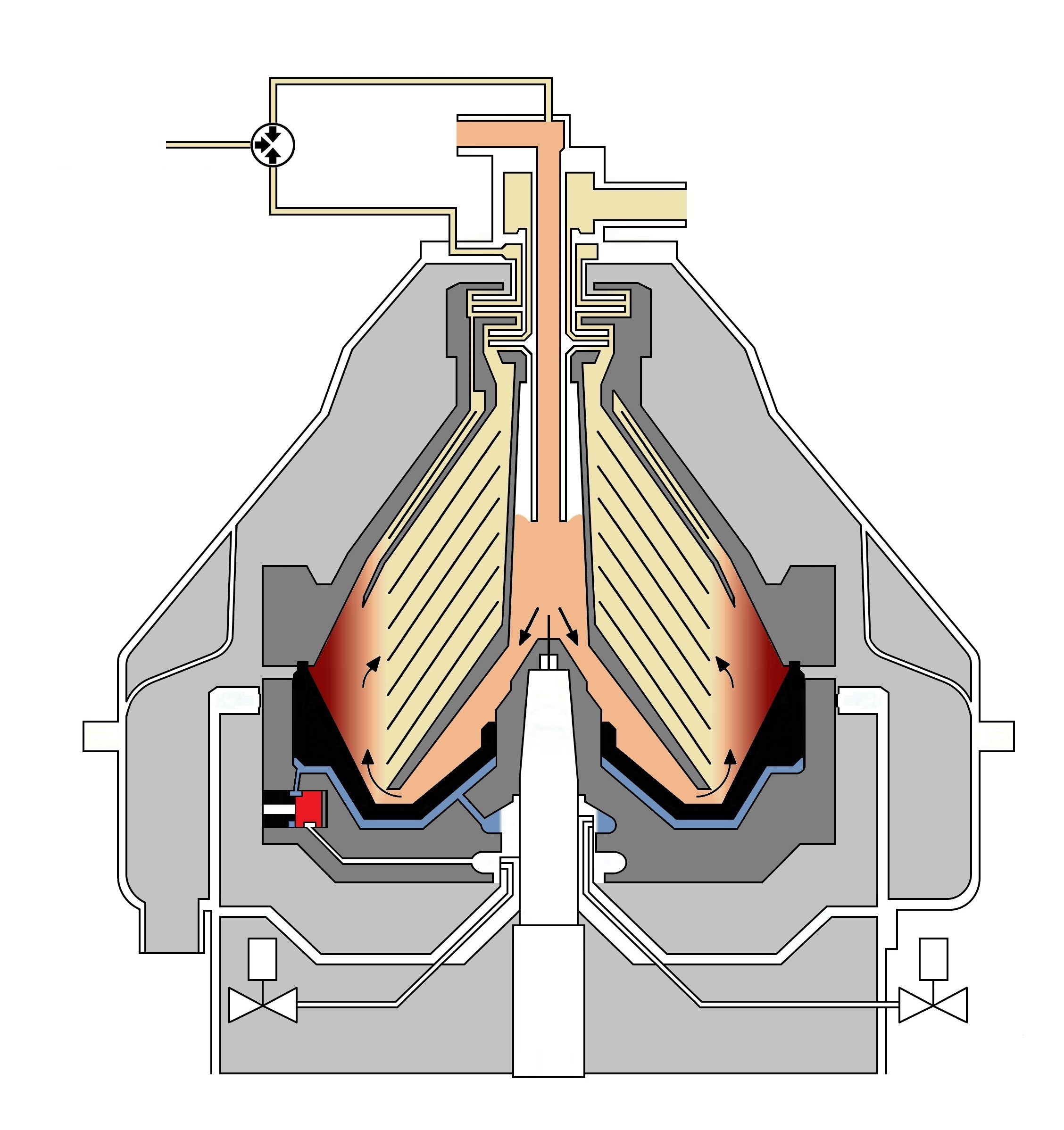Bacteria Removal for extended Fresh life - process technology
Milk, whey and other liquids may contain foreign matter and microorganisms which can be removed to a large extent by centrifugation. Such contaminating material has a higher density than the liquid and forms a deposit on the inner wall of the centrifuge bowl.
This so called centrifuge sludge can amount to 0.05 to 0.1 % of the volume of the milk.
The sludge contains leucocytes (white blood cells), larger bacteria, body cells, proteins, agglomerates of proteins containing a high proportion of bacteria, dust and dirt. It may also contain microorganisms and spores, which may be pathogenic.
The composition of the sludge is about 2/3 water, about 1/3 nitrogenous substances and other organic compounds and about 3% mineral matter. The somatic cells (leucocytes) should be controlled in the incoming milk: the right value should be about 50,000-100,000 cells/ml, with a maximum of 200,000 cells/ml.
A clarifier separator can eliminate about 95% of the cells but temperature is quite important: at high temperature the somatic cells can burn and paste to the disc reducing the clarification efficiency (max. recommended temperature 40°C).
Bactofugation of the milk
The term bactofugation means the reduction of the number of microorganisms, particularly the number of spores in cheese milk, by centrifugation. The milk to be freed of bacteria is passed through the inlet pipe and the distributor into the outer channels for the ascending milk in the bowl stack. The relatively high centrifugal forces operating in this part of the machine separate the bacteria from the milk, and they flow, because of their greater specific gravity, towards the outside of the machine. The clarified milk flows towards the centre and is discharged through the upper paring disc. The bacteria enriched concentrate flows towards the outside and arrives in the lower paring disc chamber. From there it is discharged via the paring disc under pressure and therefore without foaming.
The special separating disc which reaches down to the bottom is designed to keep, the germs concentrate apart from the clarified milk and thus to prevent reinfection within the bowl. At high centrifugal forces (10,000 x g) and at temperatures of 50°C to 60°C, about 98% of the anaerobic and 95% of the aerobic spores and lactobacilli can be separated. Dependent on the composition of the bacteria in milk, up to 70-90% of the total count of microorganisms can be removed. The bacterial concentrate is discharged through partial discharges about every 3-6 times per hour.


By means of this treatment it is possible to drastically reduce the number of anaerobic spores of Clostridium butyricum and tyrobutyricum and the incidence of the feared postfermentation and other microbial defects in semi hard and hard cheese.
Although it is possible to remove 99% and more of the microorganisms from milk by the use of higher centrifugal forces, and particularly by the use of double bacterial separator, it should be emphasised that centrifuging cannot replace pasteurising. Somatic cells over 200,000 cells/ml can affect the bactofugation efficiency due to a progressive fouling of the discs: in this case it needs to drop the processing temperature to 40°C with a reduction of bactofugation efficiency but no other chance is admitted.


Working system
The bacteria separation in the milk is suitable to improve milk quality intended for many purposes: fresh milk, ESL and UHT milk, hard and semi-hard cheese production.
The main purpose of the bactofugation is to reduce the total bacteria count for fresh product (fresh and ESL milk) or spore count for long-life product (hard and semi-hard cheese and UHT milk).
The reduction of total bacteria count can be reached also increasing the temperature of pasteurizing treatment and holding time but this is not acceptable for a high quality product (fresh and ESL milk).


